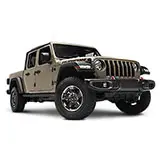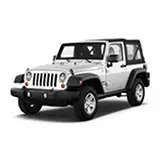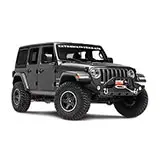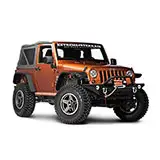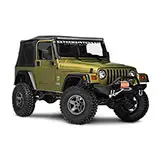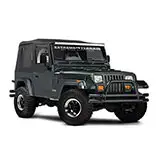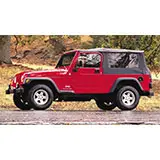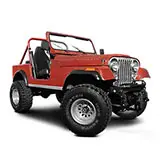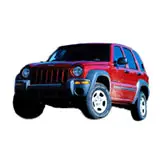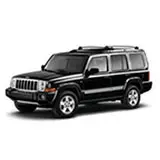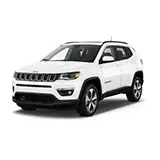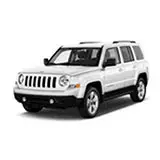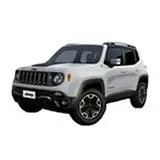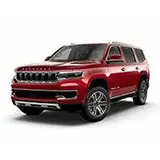
How to Plan a Jeep Overlanding Expedition
Today, we will discuss “How to Plan a Jeep Overlanding Expedition.” Overlanding is more than just off-roading; it’s a journey of exploration, self-reliance, and adventure. Planning a Jeep overlanding expedition requires careful preparation to ensure you’re ready for the road (or lack thereof) ahead. Whether you’re a seasoned traveler or a first-timer, this guide will help you plan a successful Jeep overlanding expedition, covering everything from route planning to essential gear.
1. Choose Your Destination
The first step in planning a Jeep overlanding expedition is selecting your destination. Overlanding is about the journey as much as the destination, so consider a route that offers a mix of challenging terrain, stunning scenery, and cultural experiences.
Popular overlanding destinations in the U.S. include the Mojave Road in California, the Alpine Loop in Colorado, and the Trans-America Trail, which spans from the East Coast to the West Coast. If you’re planning an international trip, destinations like the Pan-American Highway, the Australian Outback, and the Silk Road offer epic overlanding experiences.
When choosing your destination, consider the following:
- Terrain: What type of terrain will you encounter? Is your Jeep equipped to handle it?
- Weather: What’s the weather like during your planned travel dates? Are you prepared for extreme conditions?
- Accessibility: Are there fuel stops, grocery stores, and emergency services along your route?
- Permits and Regulations: Do you need permits to access certain areas, and are there any travel restrictions?
2. Plan Your Route
Once you’ve chosen your destination, it’s time to plan your route. Overlanding is about flexibility, so while it’s essential to have a general route in mind, be open to detours and unexpected changes.
Use tools like GPS devices, offline maps, and apps like Gaia GPS or OnX Offroad to map out your route. Identify key waypoints, fuel stops, and potential campsites along the way.
Consider the following when planning your route:
- Fuel Range: Know your Jeep’s fuel range and plan refueling stops accordingly. Carry extra fuel if necessary.
- Travel Time: Overestimating travel time is better than underestimating it. Allow for delays due to terrain, weather, or unexpected challenges.
- Campsites: Research designated campsites or identify areas where dispersed camping is allowed. Always follow Leave No Trace principles.
- Backup Routes: Have alternate routes in case of road closures, extreme weather, or other obstacles.
3. Prepare Your Jeep
Your Jeep is your most crucial asset on an overlanding expedition, so it’s essential to ensure it’s in top condition before you hit the road. Here’s a checklist to prepare your Jeep for the journey:
Vehicle Inspection and Maintenance
- Engine: Check the engine oil, coolant, and other fluid levels. Address any issues, such as leaks or worn belts.
- Tires: Inspect tires for wear and tear. Consider upgrading to all-terrain or mud-terrain tires for better performance on rough terrain.
- Brakes: Ensure your brakes are in good condition. Consider upgrading to performance brakes if your route includes steep descents.
- Suspension: Check the suspension components for wear and ensure they can handle the added weight of your gear.
- Recovery Gear: Equip your Jeep with essential recovery gear, including a winch, tow straps, and recovery boards.
- Lights: Ensure all lights are functioning correctly. Consider adding auxiliary lights for better visibility during night driving.
Modifications and Upgrades
- Roof Rack: A roof rack can provide additional storage space for gear, including a rooftop tent, fuel cans, and recovery equipment.
- Skid Plates: Install skid plates to protect your Jeep’s undercarriage from rocks and debris.
- Winch: A winch is essential for self-recovery in challenging terrain. Choose one with a capacity that exceeds your Jeep’s weight.
- Snorkel: A snorkel can prevent water from entering your engine when crossing rivers or driving through deep water.
4. Pack Essential Gear
Packing the right gear is crucial for a successful overlanding expedition. Here’s a list of essentials:
Camping Gear
- Tent/Rooftop Tent: Choose a tent that suits your needs, whether it’s a ground tent or a rooftop tent mounted on your Jeep.
- Sleeping Bag and Mat: Select a sleeping bag rated for the lowest temperature you’ll encounter and a comfortable sleeping mat.
- Cooking Equipment: Bring a portable stove, cookware, utensils, and a cooler or portable fridge for food storage.
- Water Storage: Carry enough water for drinking, cooking, and cleaning. A water filtration system is also recommended.
- Camping Chairs and Table: Compact camping furniture can make your campsite more comfortable.
Navigation and Communication
- GPS Device and Maps: A reliable GPS device and offline maps are essential for navigation in remote areas.
- Compass: A compass is a must-have backup in case of GPS failure.
- Satellite Phone: In remote areas, a satellite phone can be a lifesaver for emergency communication.
Safety and Recovery Gear
- First Aid Kit: A comprehensive first aid kit should include supplies for treating cuts, burns, and other injuries.
- Fire Extinguisher: A fire extinguisher is essential for putting out small fires.
- Tool Kit: Carry a basic tool kit with wrenches, screwdrivers, pliers, and other essentials for minor repairs.
- Shovel and Axe: A shovel and axe can be useful for clearing obstacles and setting up camp.
5. Navigating Your Route
Navigating an overlanding route requires more than just following a GPS. While modern GPS devices and smartphone apps are invaluable, having physical maps and a compass as backups is always wise. Here’s how to ensure you stay on track:
GPS Devices and Apps
- Dedicated GPS Units: Devices like Garmin’s Overlander or TomTom’s GO offer robust navigation features designed for off-road use. They provide topographic maps, track your route, and offer points of interest specific to overlanding.
- Smartphone Apps: Apps like Gaia GPS, OnX Offroad, and AllTrails are popular among overlanders. They allow you to download maps for offline use, which is essential in areas without cell service.
- Backup Navigation: Never rely solely on electronic devices. Carry paper maps of the areas you’ll be traveling through, and ensure you know how to read them.
Route Planning Tips
- Waypoints: Mark key waypoints on your map, such as fuel stops, campsites, and potential water sources. This helps you track your progress and make adjustments as needed.
- Terrain Awareness: Study the terrain of your route beforehand. Understanding the type of terrain you’ll encounter helps in preparing your Jeep and packing the right gear.
- Weather Conditions: Monitor weather forecasts leading up to and during your trip. Be prepared to alter your route if conditions become hazardous.
6. Staying Safe and Responsible
Overlanding is about exploring remote and wild places, but it’s crucial to do so safely and responsibly. Here are some key tips:
Know Your Limits
- Driving Skills: Overlanding requires more than just basic driving skills. Ensure you’re comfortable with off-road driving, including handling steep inclines, rocky trails, and water crossings.
- Jeep Maintenance: Regularly check your Jeep for any issues before and during your expedition. Familiarize yourself with basic maintenance tasks, such as checking tire pressure, oil levels, and brake pads.
Environmental Responsibility
- Leave No Trace: Follow the Leave No Trace principles by minimizing your impact on the environment. Pack out all trash, avoid disturbing wildlife, and stay on designated trails.
- Campfire Safety: If you’re building a campfire, ensure it’s small, contained, and completely extinguished before you leave. Be aware of local fire regulations, especially during dry seasons.
Emergency Preparedness
- Plan for Emergencies: Have a contingency plan in place for emergencies, such as severe weather or a vehicle breakdown. Share your itinerary with someone who isn’t on the trip and check in with them periodically.
- Health and Hydration: Stay hydrated, especially in hot climates, and be mindful of altitude if you’re traveling through mountainous regions. Recognize signs of dehydration and altitude sickness.
7. Enjoying the Journey
Finally, remember that overlanding is as much about the journey as it is about the destination. Take the time to enjoy the scenery, connect with nature, and appreciate the simplicity of life on the road. Capture your experiences through photos and journaling, and most importantly, savor the freedom and adventure that comes with overlanding in your Jeep. You can read all our blogs by clicking here.

